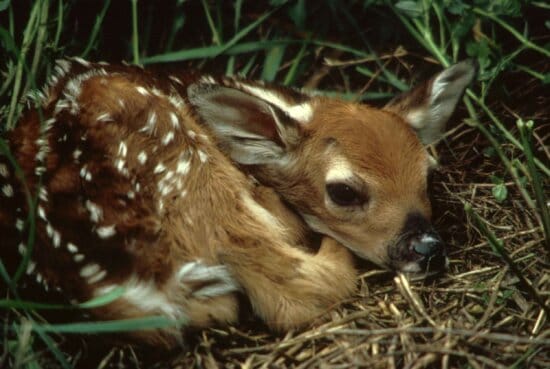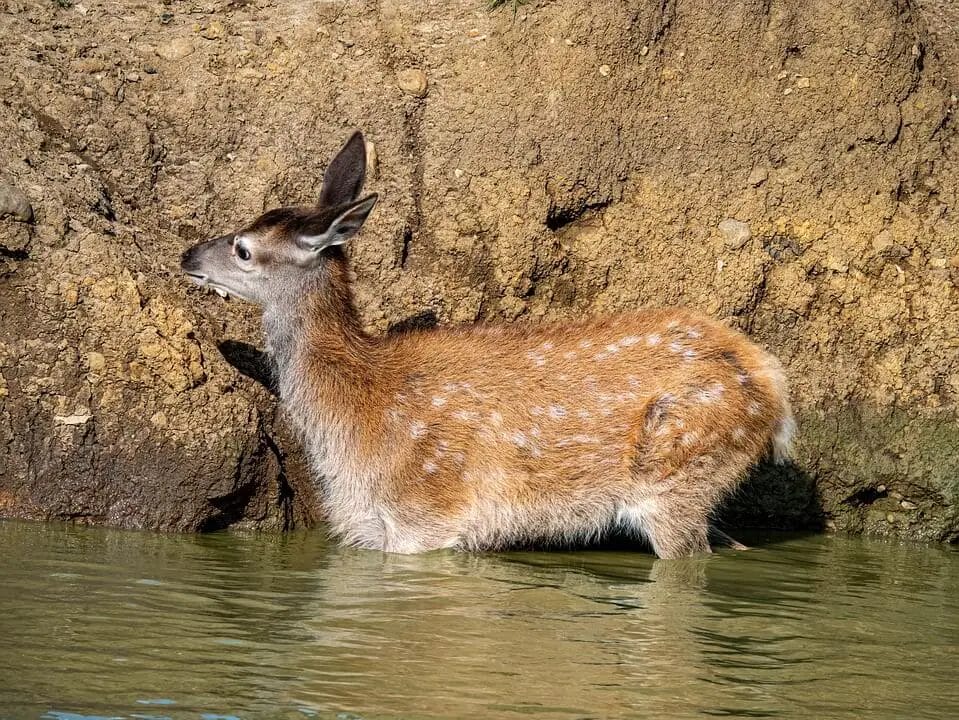Deer are often thought of as social animals, living in herds and relying on each other for protection and support. However, it is not uncommon for deer to be observed alone, and there are several possible reasons for this.
In this article, we will explore the various factors that may cause a deer to be alone and the benefits and drawbacks of this solitary behavior. We will also discuss the role of human activity in deer solitude.

Possible Reasons for a Deer to Be Alone
Health Issues or Injury
One reason a deer may be alone is if it is suffering from a health issue or injury. A sick or injured deer may be more vulnerable to predators, so it may separate from the herd in order to rest and recover in a safer location.
This can also help prevent the spread of illness within the herd.
Age
Young deer, or fawns, may also be more likely to be alone. Fawns are often left alone by their mothers for short periods of time while the mother goes off to forage for food.
This helps protect the fawn from predators and allows it to rest and grow without the constant supervision of the mother.
On the other hand, older deer may also be more likely to be alone due to age-related health issues or a decrease in social status within the herd. As deer age, they may no longer be able to keep up with the herd or compete for resources, leading them to separate from the group.
Mating Season
During mating season, male deer, or bucks, may also be more likely to be alone. Bucks will often roam and defend their territory in search of a mate, leading them to be separated from the herd.
Habitat or Territorial Issues
Another reason a deer may be alone is due to habitat or territorial issues. Deer are territorial animals and may establish their own home ranges within a larger herd’s territory.
If a deer is unable to find a suitable territory within the herd’s range, it may separate from the group and establish its own territory elsewhere.

The Benefits and Drawbacks of Being Alone for a Deer
While being alone may seem like a disadvantage for a social animal like a deer, there are also some benefits to this solitary behavior.
Benefits
One benefit of being alone is that the deer has less competition for resources such as food, water, and shelter. This can help the deer stay healthy and increase its chances of survival.
Additionally, being alone allows the deer more opportunities for rest and recovery, which can be especially important if the deer is sick or injured.
Drawbacks
However, being alone also has its drawbacks for a deer. One major disadvantage is increased vulnerability to predators.
Deer that are alone are more likely to be targeted by predators because they do not have the protection and support of a herd. Additionally, deer that are alone may have difficulty finding mates and raising offspring, which can impact their long-term reproductive success.
The Impact of Human Activity on Deer Solitude
Human activity can also contribute to deer solitude. Habitat destruction and fragmentation caused by human development can disrupt natural deer behavior patterns and lead to the isolation of individual deer.
In addition, human interference, such as feeding or relocating deer, can also affect their social dynamics and increase the likelihood of solitary behavior.
Conclusion
In conclusion, there are several reasons a deer may be alone, including health issues, age, mating season, and habitat or territorial issues.
Being alone can have both benefits and drawbacks for a deer, and human activity can also contribute to deer solitude. Understanding the factors that contribute to deer solitude can help us work to protect and preserve their natural habitats.

Is it normal for deer to be alone?
It is not uncommon for deer to be observed alone, and there are several possible reasons for this. Some deer may be alone due to health issues or injury, age, mating season, or habitat or territorial issues.
However, it is important to note that deer are generally social animals and typically live in herds for protection and support.
Can a lone deer find a mate and raise offspring?
While it is possible for a lone deer to find a mate, it may be more difficult compared to a deer that is part of a herd. Similarly, a lone deer may have more difficulty raising offspring due to a lack of support and protection from the herd.
How does habitat destruction and fragmentation contribute to deer solitude?
Habitat destruction and fragmentation caused by human development can disrupt natural deer behavior patterns and lead to the isolation of individual deer.
For example, if a deer’s natural habitat is destroyed or fragmented, the deer may become separated from the herd and unable to find its way back. This can result in the deer becoming isolated and living a solitary life.
Can human interference, such as feeding or relocating deer, impact their social dynamics and increase the likelihood of solitary behavior?
Yes, human interference, such as feeding or relocating deer, can disrupt their natural behavior patterns and social dynamics.
For example, if deer become accustomed to being fed by humans, they may become less reliant on natural food sources and more likely to be found alone. Similarly, relocating deer can also disrupt their social bonds and increase the likelihood of solitary behavior.
What can we do to protect and preserve deer habitats and prevent solitude?
There are several ways we can work to protect and preserve deer habitats and prevent solitude. Some options include conserving natural habitats, limiting human interference with deer behavior, and promoting sustainable land use practices.
Additionally, supporting organizations that work to protect and preserve deer habitats can also be an effective way to make a positive impact.
